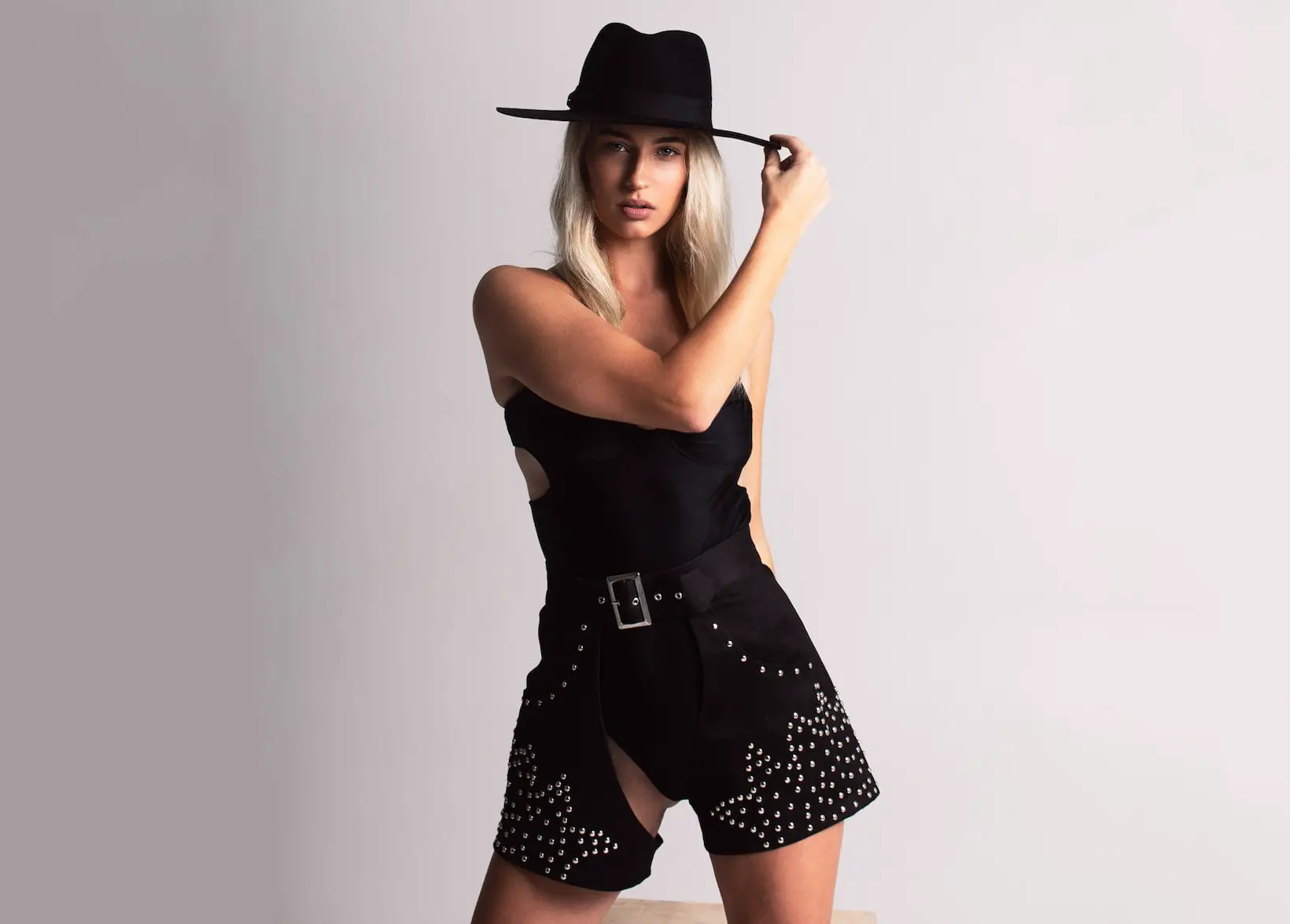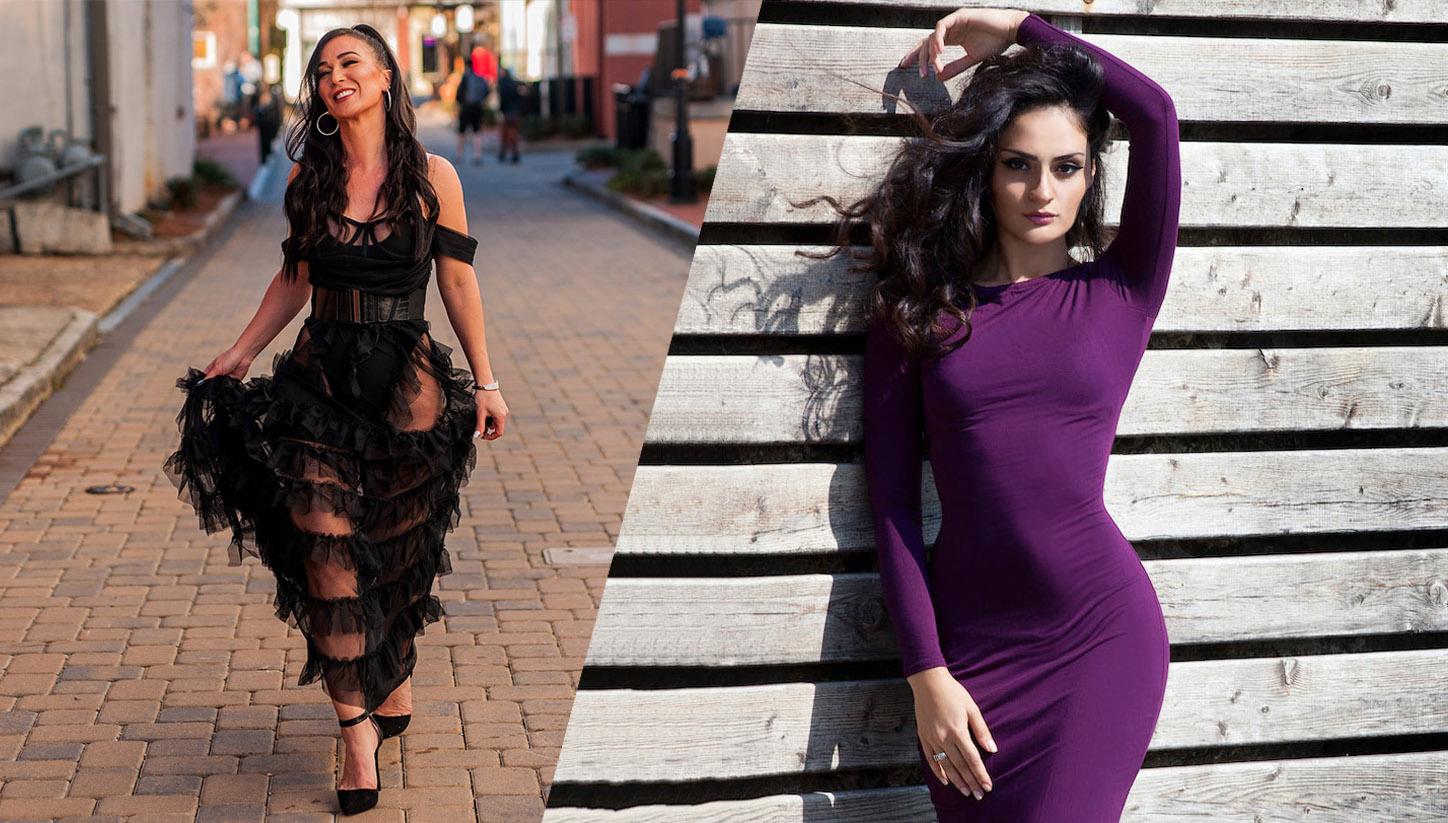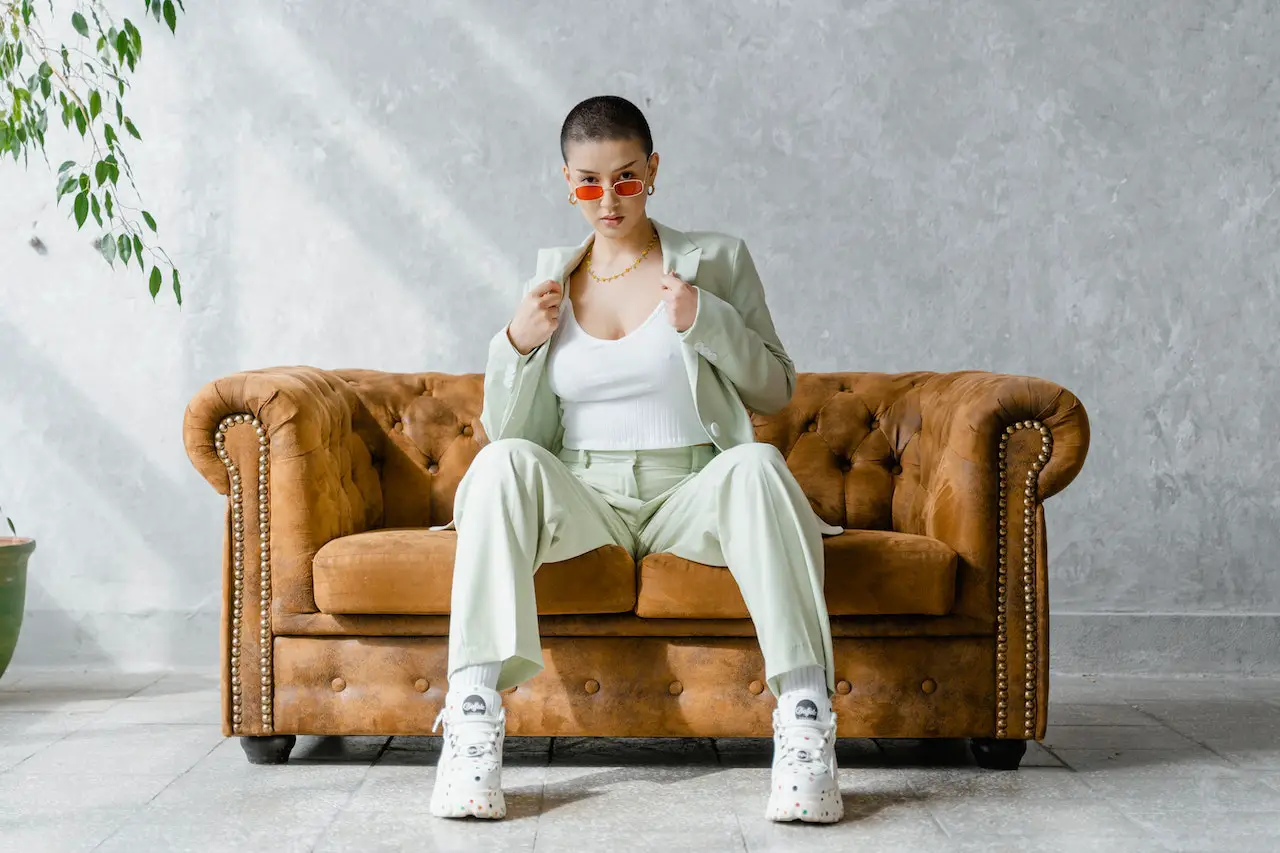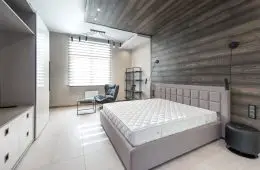Fashion is a constantly evolving industry, with new styles and trends emerging every season. Whether you prefer classic, timeless looks or bold, statement-making outfits, there’s a fashion style out there for everyone.
In this article, we will explore the different types of fashion styles and outfits, from casual and comfortable to elegant and sophisticated. From the bohemian look inspired by world cultures to the punk style influenced by the rebellious spirit of rock and roll, we will examine the most popular fashion styles and what makes each one unique.
So, whether you’re a fashion enthusiast or just looking to try something new, read on to discover the diverse world of fashion styles and outfits.
What are Fashion Styles?

Fashion is a form of self-expression, and the styles and outfits we choose to wear are a reflection of our individuality and personality. Whether you prefer classic and timeless styles or like to make a bold statement with your fashion choices, there is a style for everyone.
Fashion styles refer to the various types and designs of clothing, accessories, and beauty products that are popular and in demand at a particular time or era. Fashion styles are constantly evolving and changing, influenced by various cultural, social, economic, and technological developments.
Different fashion styles can range from traditional and classic to contemporary and avant-garde and can encompass a wide range of styles including streetwear, minimalist, bohemian, and sustainable fashion. The term “fashion styles” is often used to describe the collective trends and preferences of a particular group of people or society at a particular time.
Fashion Styles vs. Fashion Trends

Fashion styles and fashion trends are related but distinct concepts in the fashion industry.
Fashion styles refer to a particular look or aesthetic that is characterized by certain features such as silhouettes, fabric choices, colors, and patterns. These styles often have a lasting impact and can remain popular for several seasons or even years. Examples of fashion styles include classic, vintage, bohemian, streetwear, and athleisure.
Fashion trends, on the other hand, are temporary and change more frequently. They refer to the latest designs, patterns, and colors that are popular at a particular moment in time. Trends are usually driven by seasonal changes, cultural events, and the influence of designers and celebrities. They can be seen as a reflection of the current mood and sentiment of society. Examples of current fashion trends include chunky sneakers, bold prints, and oversized accessories.
In summary, fashion styles represent a lasting and timeless aesthetic, while fashion trends are more fleeting and influenced by the latest cultural and societal developments.
Types of Outfits and Fashion Styles Name

Here we will explore some of the most popular types of outfits and fashion styles, from casual and business attire to bold and eclectic styles. Whether you’re a fashionista or just looking to update your wardrobe, this article will give you a better understanding of the different fashion styles and help you find the perfect outfit for any occasion.
Artsy style: An eclectic and eclectic fashion style, characterized by bold and unconventional clothing and accessories inspired by art, culture, and nature. Often features unique patterns, textures, and colors.
Athleisure style: A blend of athletic and leisure wear, characterized by comfortable and functional clothing suitable for both physical activity and everyday wear. Often includes leggings, sneakers, and athleisure-specific tops and jackets.
Ankara style: A type of ethnic fashion originating from Africa, characterized by bright and bold African print fabric known as Ankara, often incorporated into a variety of clothing items and accessories.
Boho style/Bohemian Style (Boho Chic): A free-spirited fashion style inspired by the bohemian lifestyle and vintage fashion, characterized by loose and flowy clothing, earthy colors and patterns, fringe, and eclectic accessories.
Business Casual style: A relaxed but professional dress code, characterized by a mix of formal business attire such as dress shirts and blazers with more casual items like chinos and loafers.
Biker Fashion Style: A rugged and edgy fashion style inspired by motorcycle culture, characterized by leather jackets, studded boots, and metal accents.
Beach Fashion: A relaxed and casual fashion style, characterized by lightweight and breathable clothing, such as swimwear, cover-ups, shorts, and sandals, perfect for a day at the beach.
Cottagecore outfits: Cottagecore outfits are inspired by rural life, often characterized by delicate and feminine prints, ruffles, lace, florals, and pastel colors. This style is all about being comfortable, simple, and elegant.
Casual wear: Casual wear is a style that is comfortable, relaxed, and suitable for everyday wear. It often involves wearing denim, t-shirts, sneakers, and other comfortable clothing.
Casual Chic style: Casual Chic style is a fusion of casual wear with a touch of sophistication. It involves wearing comfortable clothing in a more elevated and put-together way, often using simple and classic pieces with a modern twist.
Classic Fashion Styles: Classic fashion styles are timeless and never go out of fashion. They often involve wearing simple, elegant, and timeless pieces such as the little black dress, blazers, and pearls.
Cosplay: Cosplay is a type of performance art where people dress up as their favorite fictional characters, often from comic books, video games, anime, and more.
Chic Style: Chic style is sophisticated, stylish, and elegant. It often involves wearing high-end fashion pieces and combining them in a way that is both effortless and polished.
Cowgirl: Cowgirl style is inspired by the fashion of western cowgirls, often involving denim, leather, fringe, and cowboy hats.
Dancewear: Dancewear is a type of clothing designed for dance performances, often including leotards, tights, tutus, and dance shoes.
Disco style: Disco style is inspired by the fashion of the 1970s disco era, often involving bright colors, metallic fabrics, platform shoes, and glitter.
Dark and Light Academia Outfits: Dark Academia and Light Academia are two popular subcultures that focus on fashion and aesthetics. Dark Academia is characterized by a gothic and moody style, while Light Academia is inspired by classical education and includes more pastel colors and preppy elements.
Elegance: A quality of gracefulness and good taste in appearance, behavior, or style. Elegant fashion is characterized by clean lines, refined fabrics, and a timeless look. It often involves understated, sophisticated pieces that exude sophistication and class.
Evening wear: Refers to formal clothing worn to formal events, such as black-tie events, galas, and weddings, typically after 6 PM. Evening wear typically includes formal gowns for women and tuxedos or suits for men. The focus is on luxury fabrics, classic cuts, and elegant accessories.
Exotic fashion style: Refers to fashion that incorporates elements from various cultures and ethnicities, often blending traditional and modern styles to create a unique look. This style often draws inspiration from global fashion, incorporating bold prints, intricate embroidery, and unexpected color combinations.
E-Girl Fashion Style: A style of fashion that is associated with internet culture, characterized by crop tops, oversized hoodies, fishnets, and other edgy, streetwear-inspired pieces. This style is often influenced by the world of gaming and anime, and it is characterized by its bold, playful, and somewhat rebellious vibe.
Emo Fashion: A style of dress associated with the emo subculture, characterized by tight-fitting clothing, dark colors, and heavy eyeliner. This style often features band t-shirts, skinny jeans, and studded belts and bracelets. It is meant to be a form of self-expression, with a focus on individuality and non-conformity.
Ethnic fashion: Refers to clothing that incorporates traditional elements from a particular culture or ethnic group. It can range from traditional clothing, such as saris and kimonos, to modern interpretations of these styles. Ethnic fashion often celebrates cultural heritage and traditions, incorporating traditional techniques such as weaving, embroidery, and dyeing.
Flamboyant style: A fashion style characterized by bold, bright colors, eccentric patterns, and unique accessories. It is often associated with a larger-than-life personality and is meant to make a statement. Flamboyant fashion is playful, daring, and unapologetic, and it is often seen on fashion runways and red carpets.
Formal clothing: Refers to attire that is appropriate for formal events, such as weddings, galas, and black-tie events. For men, this typically includes a tuxedo or a suit and tie, while women often wear formal gowns. Formal clothing is elegant, refined, and typically made from high-quality fabrics.
Festival Fashion Styles: Refers to the eclectic, bohemian-inspired clothing worn to music festivals, such as Coachella. Festival fashion often includes flowy dresses, fringe, and a mix of vintage and modern styles. It is meant to be comfortable, fun, and playful, with a focus on individuality and self-expression.
Garconne: A fashion style that originated in the 1920s, characterized by a androgynous, masculine look for women. This style typically involves tailored trousers, shirts, and jackets, often in neutral colors. The focus is on simplicity and functionality, with a nod to menswear-inspired fashion.
Girly Fashion Style: A style of fashion that is playful, feminine, and often involves romantic and delicate details. This style often features frills, lace, and pastel colors, and it is meant to evoke a youthful, carefree spirit.
Girl next door fashion style: A style of fashion that is casual, comfortable, and approachable. This style often features simple, classic pieces, such as jeans and t-shirts, and it is meant to exude a natural, effortless beauty.
Gothic fashion: A style of fashion associated with the Gothic subculture, characterized by dark colors, heavy fabrics, and medieval-inspired details. This style often features corsets, Victorian-style dresses, and dark accessories, and it is meant to evoke a mysterious and moody atmosphere.
Grunge style: A style of fashion that emerged in the 1990s and was associated with the grunge music scene. This style is characterized by a focus on comfort and simplicity, often involving oversized flannel shirts, distressed denim, and vintage t-shirts.
Haute couture: A style of fashion that involves custom-made, high-end clothing, often created by the world’s leading fashion houses. Haute couture is characterized by the use of luxurious fabrics, intricate details, and a focus on craftsmanship and artistry.
Hip hop clothing: A style of fashion associated with hip hop culture, characterized by bold, oversized pieces, such as baggy jeans and sports jerseys. This style often involves bold prints, graphic tees, and athletic wear, and it is meant to reflect the energy and style of hip hop music.
Hippie Fashion: A style of fashion associated with the hippie movement of the 1960s and 1970s, characterized by a focus on comfort, simplicity, and a connection to nature. This style often involves loose, flowy garments, such as maxi dresses and bell-bottom pants, and it often incorporates earthy colors and natural fabrics.
Kawaii style: A style of fashion associated with the Kawaii culture, which originated in Japan and emphasizes cuteness and playfulness. This style often features pastel colors, oversized accessories, and cute characters, such as Hello Kitty.
K-Pop fashion: A style of fashion associated with Korean pop music, characterized by bold, daring, and eclectic styles. This style often involves bright colors, statement pieces, and a mix of different fashion trends, reflecting the energetic and trend-setting spirit of K-Pop music.
Lagenlook clothing: A style of fashion that originated in Germany, characterized by layered, oversized clothing in natural fibers and muted colors. This style often involves long tunics, baggy trousers, and voluminous skirts, and it is meant to exude comfort and ease.
Loungewear style: A style of fashion focused on comfortable, casual clothing for relaxation or leisure. This style often involves cozy sweatsuits, oversized t-shirts, and other comfortable garments, and it is meant to provide a comfortable, low-key look.
Lolita style: A style of fashion associated with the Lolita subculture, which originated in Japan and emphasizes a cute, doll-like appearance. This style often involves frilly dresses, corsets, and petticoats, and it often incorporates pastel colors and Victorian-inspired details.
Maternity clothing: Clothing designed to accommodate the physical changes of pregnancy, such as a growing belly, and to be comfortable and practical. This style often involves stretchy fabrics, adjustable waistbands, and easy-access features, and it is meant to provide comfort and support to expecting mothers.
Military fashion style: A style of fashion inspired by military uniforms, characterized by utilitarian details, such as cargo pockets and epaulets, and a focus on durability and functionality. This style often involves jackets, cargo pants, and other clothing items in earthy colors, and it is meant to evoke a tough, rugged look.
Minimalist fashion: A style of fashion characterized by simple, uncluttered designs, neutral colors, and a focus on clean lines. This style often involves a limited color palette, minimal accessories, and a focus on quality materials, and it is meant to exude sophistication and elegance.
Modern urban: A style of fashion that reflects the energy and pace of modern urban life, characterized by a mix of different styles and trends. This style often involves bold, daring pieces, such as statement coats and unique accessories, and it is meant to evoke a modern, fashion-forward look.
Modest clothing: Clothing that covers the body in a manner that is considered appropriate or modest, often for religious or cultural reasons. This style often involves conservative cuts and longer hemlines, and it often incorporates loose-fitting garments and scarves or head coverings. The focus is on comfort and respect for cultural norms and values.
Nerdy and geeky: The nerdy and geeky fashion style incorporates elements of pop culture, such as comic books, video games, and technology, into clothing and accessories. It is often playful and lighthearted, featuring graphic tees, statement socks, and geek-themed accessories.
Parisian style: Parisian style is a fashion style that embodies the classic elegance and sophistication of Parisian women. It is characterized by chic, timeless pieces, such as tailored blazers, silky blouses, and perfectly fitted trousers, and is often paired with statement accessories and effortless hair and makeup.
Preppy fashion: Preppy fashion is a style that is inspired by the Ivy League look of the 1950s and 60s. It is characterized by classic, well-tailored pieces, such as polo shirts, chinos, and penny loafers, and often features bold patterns, stripes, and prints. Preppy fashion is often associated with an upscale and well-to-do aesthetic.
Punk rock: Punk rock fashion is a style that emerged in the 1970s and is associated with the punk rock music scene. It is characterized by bold, rebellious designs, such as leather jackets, ripped jeans, and safety pin accessories. Punk rock fashion often incorporates DIY elements, such as studded clothing and custom-made accessories.
Psychedelic fashion: Psychedelic fashion is a style that incorporates bold, bright colors and patterns inspired by the psychedelic art and music of the 1960s and 70s. It is often associated with a free-spirited and imaginative aesthetic, and features statement pieces like tie-dye shirts, bell-bottom pants, and fringe-trimmed accessories.
Rock Fashion Styles: This style takes its cue from the iconic rock stars of the 1970s and 1980s, and often features leather jackets, band t-shirts, and skinny jeans. Key accessories include aviator sunglasses, bandanas, and studded belts.
Retro Fashion Styles: Retro fashion refers to clothing styles from the past that have been updated for modern wear. This style often features vintage-inspired prints, vintage cuts, and vintage-style accessories.
Resort Fashion Style: Designed for wear on a tropical vacation or at a beach resort, resort fashion features lightweight materials, breezy cuts, and bold prints. Key pieces include sundresses, swimwear, and flip flops.
Sexy Fashion Style: This style emphasizes sex appeal, often featuring tight-fitting, revealing clothing. Key pieces include bodycon dresses, high heels, and plunging necklines.
Street Style: This style takes its cues from the fashion worn on the streets, often incorporating bold, edgy pieces. Street style often features graphic tees, distressed denim, and oversized sunglasses.
Streetwear Outfits: A subculture-inspired style, streetwear often features oversized pieces, bold graphics, and an emphasis on comfort. Key pieces include oversized hoodies, track pants, and sneakers.
Sporty Fashion: Inspired by athletic wear, sporty fashion emphasizes comfort and practicality. Key pieces include athletic shorts, running shoes, and sporty jackets.
Summer Clothing: Designed for warm weather, summer clothing often features lightweight materials, bright colors, and relaxed cuts. Key pieces include sundresses, short shorts, and tank tops.
Surf Skate Style: Inspired by the surfing and skateboarding cultures of the 1960s and 1970s, this style features board shorts, tank tops, and oversized sunglasses.
Swimwear Style: Designed for wearing at the beach or pool, swimwear includes a variety of pieces such as bikinis, one-pieces, and swim trunks.
Tomboy Style: This style is characterized by a boyish, androgynous look, often featuring oversized clothing, sneakers, and baseball caps.
Traditional Fashion Style: This style focuses on timeless, conservative designs and is inspired by traditional cultural clothing. It emphasizes classic cuts and luxurious fabrics, and is often seen as formal or conservative.
Trendy Fashion: This style incorporates current fashion trends and incorporates them into everyday wear. It is often associated with young people who want to keep up with the latest fashions.
Victorian Fashion: This style is characterized by full skirts, high necklines, and elaborate accessories, inspired by the fashions of the Victorian era. It emphasizes femininity and elegance and is often seen as romantic and nostalgic.
Vibrant Style: This style is characterized by bold and bright colors, patterns, and prints. It is often associated with confidence, playfulness, and creativity.
Vintage Fashion Styles: This style is inspired by the fashions of previous eras, often the 1920s to the 1960s. It emphasizes classic cuts and details, and is often seen as timeless and nostalgic.
Wild West Style: This style is inspired by the fashion of the American frontier and is characterized by denim, leather, and fringe. It is often associated with toughness and a free-spirited attitude.
Read Also: Popular European Clothing Brands and Fashion Companies
FAQs on Different Types of Fashion Styles & Outfits
What are the different types of fashion styles?
There are various fashion styles, including but not limited to Classic, Casual, Chic, Bohemian, Streetwear, Preppy, Vintage, Minimalist, Sporty, and Romantic.
What defines the Classic style?
Classic style is characterized by timeless and elegant clothing choices. It often includes tailored pieces, neutral colors, and simple patterns that withstand fashion trends.
What is Casual fashion?
Casual fashion is laid-back and comfortable, focusing on relaxed clothing like jeans, t-shirts, sneakers, and sweatshirts. It’s about effortless style for everyday wear.
How can I achieve a Chic look?
Chic style emphasizes sophistication and polished aesthetics. It involves well-fitted clothing, trendy accessories, and a mix of high and low fashion pieces for an effortlessly stylish appearance.
What is the Bohemian (Boho) style?
Bohemian style is characterized by free-spirited and eclectic clothing choices. It often includes flowy dresses, earthy colors, layered jewelry, and a mix of vintage and ethnic elements.
What defines Streetwear fashion?
Streetwear is influenced by urban culture and often incorporates elements from skateboarding, hip-hop, and sportswear. It includes baggy jeans, graphic tees, hoodies, and sneakers.
How can I achieve a Preppy look?
Preppy style is inspired by traditional Ivy League clothing. It features clean lines, neat silhouettes, and a focus on tailored pieces like blazers, collared shirts, khakis, and boat shoes.
What is Vintage fashion?
Vintage style involves wearing clothing and accessories from a previous era. It’s about embracing fashion trends from the past and incorporating them into modern outfits.
How do I achieve a Minimalist look?
Minimalist style revolves around simplicity and functionality. It features clean lines, neutral colors, and a focus on quality over quantity, with each piece serving a purpose.
What defines Sporty fashion?
Sporty style combines athletic and casual elements. It includes activewear like leggings, sneakers, track jackets, and hoodies, often styled in fashionable ways beyond the gym.
How can I achieve a Romantic look?
Romantic style is characterized by soft, feminine, and whimsical clothing choices. It often includes flowy dresses, lace details, floral patterns, and pastel colors.
What is the difference between Fashionable and Trendy?
Being fashionable means having a keen sense of style and dressing well according to your personal preferences. Trendy refers to following the latest fashion trends that might change quickly.
Can I mix different fashion styles?
Absolutely! Mixing styles, also known as “eclectic” fashion, can result in unique and personalized outfits. Just ensure that the pieces you combine complement each other in terms of color, texture, and overall aesthetics.
How do I find my personal fashion style?
Experiment with different styles, pay attention to what you feel most confident and comfortable in, and draw inspiration from fashion icons, magazines, and online platforms to discover a style that resonates with you.
Is there a fashion style for formal occasions?
Yes, formal occasions often call for more elegant and refined attire. Classic, sophisticated, and tailored styles work well for formal events. Consider options like suits, evening gowns, and well-coordinated accessories.
Conclusion
There is a wide variety of fashion styles to choose from, each with its own unique look and feel. From classic and timeless styles like preppy and chic to edgier and trendier styles like streetwear and punk, there is something for everyone.
The key to finding your personal fashion style is to experiment with different looks and to trust your instincts about what feels right for you. Ultimately, the most important thing is to feel confident and comfortable in your clothing, no matter what fashion style you choose.


